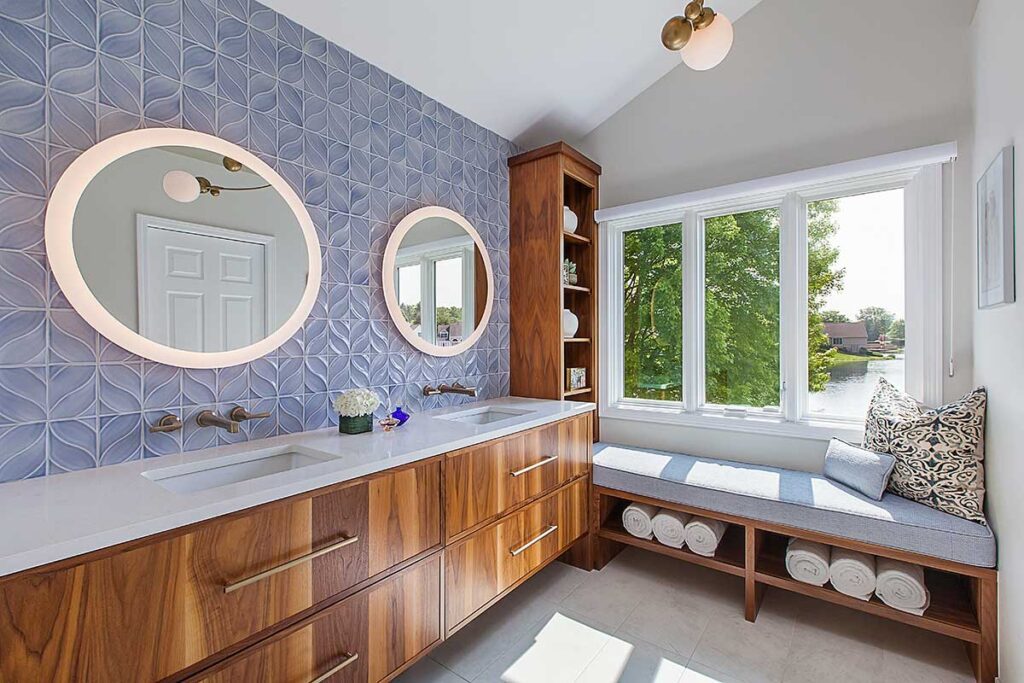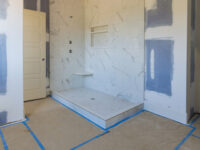Tips For a Successful Bathroom Remodel
Richmond Va Bathroom Remodel can be a large investment. Make sure you choose contractors who can be trusted and who will take the time to understand your vision.
Layout changes include relocating fixtures, like the tub or shower, and moving the toilet. It can also mean adding more storage and changing the floor footprint.

- Set a Budget
The cost of remodeling a bathroom varies from one home to the next, depending on what features you include and how much the project entails. Setting a budget before getting started is important, which can help you stay within your limits throughout the remodel. If you need to determine how much your remodel will cost, get professional estimates before starting the work. Getting quotes from different contractors will help you find the best value for your money.
Some aspects of a bathroom remodel, like painting or replacing light fixtures, can be completed on your own, saving you money in labor costs. However, more extensive remodel projects, such as reworking the footprint of your bathroom and moving plumbing, require professional help. This is why you should always consider hiring a qualified pro for the tasks that require their expertise.
It’s also important to know that remodeling is an ongoing process, and it’s normal to incur unexpected expenses. That’s why allocating 5-10% of your contingency budget is a good idea. This money can cover any unexpected repairs or upgrades you may not have planned for. For example, adding a heated towel rail with a timed eco wall switch can save you energy costs in the long run and add to your home’s value.
When choosing a pro for your bathroom remodel, select an experienced, trustworthy contractor with the proper credentials and a great reputation in the industry. It would help if you also looked for discounts, rebates, or incentives that could save you money. For example, a licensed designer can purchase discounted products and offer expert advice tailored to your space and needs.
- Do a Full Gut
A full gut renovation is more expensive but can add significant value to your home. This may be worth the investment if you plan to sell your property shortly. A cosmetic renovation may be more cost-effective if you plan to keep your home.
Before starting your renovation:
- Do your homework.
- Research costs, contractors, and legal requirements.
- Talk to others who have undergone major residential gut renovations to learn what worked and what didn’t.
- Establish a budget and prioritize your wish list of updates, separating must-haves from nice-to-haves.
Work with a design professional to develop a plan and estimate time and cost. This will help you stay on track and avoid surprises down the road.
Check with your local government to find out if you need a demolition permit or any other permits for your project. Once you have all the necessary licenses, start ordering materials like lumber and windows. When your contractor begins the demolition, having the materials ready to go will save you valuable construction time.
You’ll need to replace your existing electrical circuits. These are likely fed by 15-amp wiring, which isn’t up to supporting your appliances (from electric razors to hair straighteners). It would help if you also replaced the existing drywall with a cement board for superior moisture resistance.
If you want to replace your tub or shower, choose a model that’s ADA-compliant or designed for easy accessibility. These options can increase the overall price of your bathroom remodel, but they’re well worth it for anyone with mobility issues or limited physical abilities.
- Start in a Specific Sequence
It’s important to start in a specific sequence when remodeling your bathroom. This will help you avoid damage and save time. For example, you should remodel the ceiling before moving on to walls and floors. This will prevent water and debris from damaging your new tile, vanity, tub, or paint.
Install cabinets or shelving if you want to add storage to your bathroom. It’s a great way to keep your bathroom organized and neat. Many different sizes and materials of cabinets are available to fit your needs. Make sure to select one that is durable and easy to clean. Next, install the sink and vanity. Choose a style and material that you like and suits your design aesthetic. Finally, install the toilet and any other accessories you want to include, such as a fan, mirrors, or towel bars.
Once all of the drywall is installed, you can paint. This is a critical step in a bathroom remodel because it will give your room a new look and protect against mold and mildew. It’s best to use a semi-gloss or satin paint resistant to humidity. It would help if you also waited to install the bathtub, shower, and sink before painting so that you don’t accidentally drip paint on them.
After the paint dries, you can install the tile. This is a major part of any bathroom remodel and takes a lot of time. It’s important to lay your tiles correctly and choose a grout color that matches your tiles and bathroom. Be sure to allow enough time for this step, as it can be frustrating. Once the tile is installed, you can install the toilet and other accessories in your bathroom.
- Plan for Lighting
A bathroom is all about function, but it can also be an opportunity for a little style. Lighting fixtures come in various styles and finishes and help tie tile and other decorative elements together. Layering your lighting is a good idea in the bath; alternating between bright light for tasks and gentler levels for ambiance is easier with dimmers.
You’ll want to start with the ceiling. Then, work your way down to the vanity area, where you’ll need ample task lighting for daily tasks like shaving and applying makeup. Accent lighting is a great addition, especially in the shower or tub, where it can highlight a special feature or provide an opportunity for chromotherapy (colorful underwater lighting shows in the tub).
Remember, electricity and water don’t mix, so if you plan on adding lighting fixtures near the sink, bathtub, or shower, ensure they are “wet-location” rated and have GFCI outlets. This will ensure your safety if you turn the lights on in the middle of your bath.
You can also add an appropriate fan for the room and a mirror to match your new fixture selections. Depending on the size of your bathroom and the style you’re going for, you can even add a chandelier. Decorative items like these are a great way to rejuvenate an older powder room or transform a smaller main bathroom into a spa-like retreat. The most important thing to remember is that your remodel will probably require some electrical work, and you should always hire a licensed electrician. This will save you both time and headaches down the road.
- Plan for Accessories
Bathroom remodels are a big investment and often one of the most used areas in the home. They also rank among the best improvements in terms of resale value. However, a good quality project requires careful planning to avoid costly mistakes. Poor planning is the number-one cause of remodeling overruns, so set aside enough time to do it right.
Bathrooms are difficult to plan because they are usually small and tightly enclosed. It would help if you considered how the finished product will look and function in every detail. The key is to choose products that will last a long time without becoming outdated. Sticking with neutral styles will ensure a new owner can easily adapt the room to their tastes.
When choosing fixtures, opt for ones that are energy efficient, water-saving, or have a low environmental impact. Also, ensure you have enough storage space to keep everything uncluttered. This will help you avoid clutter and mess, which can spoil the overall look of your bathroom design.
Planning for lighting upgrades during a bathroom remodel is a good idea. A dimmer switch allows you to set the mood, and recessed lighting around the mirror provides the best light for shaving, brushing teeth, and applying makeup.
Make your bathroom more livable by adding textures with bathmats and rugs. They add color and interest to the space and keep you from slipping on wet surfaces. You can even incorporate a slatted wood mat for a more rustic, natural feel. Accessory details can also add personality to your bathroom, such as a hanging piece of one-of-a-kind artwork or a colorful shower curtain.






